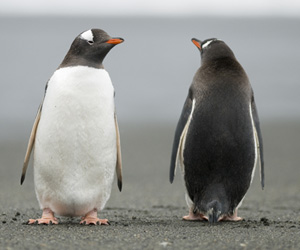
The Truth About Valentine’s Day
The perfect card, the perfect gift, the perfect date . . . Isn’t there enough pressure in relationships without having to live up to some romantic ideal on Valentine’s Day?
This is not how the celebration of February 14 started out. Its origins stem from fertility festivals of ancient Rome, when young women were not given candy or flowers. They were whipped with strips of animal hide because they believed that this would make them more fertile. A couple of centuries later, Christians celebrated a priest named Valentine, who secretly performed marriage ceremonies for soldiers when the emperor had forbidden it. By the 1400’s Valentine’s Day was firmly established in England, but the emphasis was on little rituals, such as drawing names out of a bowl, to discover the identity of one’s true love.
In recent decades Valentine’s Day has become increasingly commercialized. TV and magazine ads depict models with perfect bodies and perfect teeth giving each other chocolates, jewelry and back rubs. The message is: “Your love is measured by what you buy.”
Modern relationships are difficult enough without having to stage a major performance on a designated day. Men agonize over the greeting card racks, hoping that they can choose a card that is not too funny, not too mushy. And the gift: “How will she interpret it?” they ponder. “If I buy her chocolates will she think I want her to get fat? If I don’t buy her chocolates will she think I assume she is fat?” “Is the gift too extravagant?” “Is it too impersonal?” “Are roses too predictable?”
This is not what love is all about. Love is much more complex than flowers and chocolates. Social psychologists have been studying interpersonal attraction and love for almost four decades, and they still haven’t figured it out completely. What is known, however, is that love relationships are multi-dimensional. Sexual attraction, or what some people call “chemistry” is only one ingredient of a love relationship, and not even the most important one.
Distinctions have been made between passionate love and companionate love. Passionate love is an intense longing for the other person. It is accompanied by extreme feelings: ecstasy when things are going well, and despair when things are rocky. Passionate love is also characterized by physical sensations, such as rapid heartbeat and “butterflies” in the stomach.
Companionate love does not have the fire and the heat that passionate love does, but it can more than compensate in the form of closeness, trust and affection. Furthermore it lasts much longer than passionate love, which subsides relatively quickly.
Another way of defining love is in terms of three components: passion, commitment and intimacy. These interact with one another in various combinations, so that no two relationships are alike.
Long-term satisfaction in relationships does not depend on material wealth or success. Nor does it depend on physical attractiveness. A recent study of middle-aged college graduates indicated that good-looking people, on average, were no more satisfied with their marriages or with their lives, than were plainer people.
So what does constitute long-term contentment in relationships? Psychologists have found that a feeling of equity is important. That is, the partners feel they are each getting about as much as they’re giving. Not that they keep score, but over the long run things even out. This is similar to just being good friends to one another, supporting one another, laughing at each other’s jokes even though you’ve heard them dozens of times. Another ingredient in long-term relationships is investment. This refers to material possessions, time and emotional investment. The greater the investment, the more likely the couple will stay together.
What does all this have to do with Valentine’s Day? If you wish, buy that card or those flowers, but keep in mind that this is not a maker or breaker of a relationship. Better yet, show your partner love and consideration on the other 364 days in the year. It will make a greater impact than doing so according to the calendar.




Comments